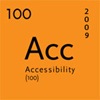Visitability Practices Increases Community Inclusion
 When my parents bought my first electric scooter way back in Grade 8, the world that I could explore on my own grew significantly. That world soon included Beth’s house.
When my parents bought my first electric scooter way back in Grade 8, the world that I could explore on my own grew significantly. That world soon included Beth’s house.
Beth was my first friend in high school and she lived around the corner and up a short block from us. Once I had my scooter, I was able to go independently to Beth’s house, although Mom did do the “Mom-thing†the first time by watching from the corner to make sure I got there okay.
Other than our own house, which was a rancher, Beth’s house was the only house I didn’t need to be carried into. There was a door from the carport into the family room. There was even a small bathroom on the ground flour.
Beth’s house was ahead of its time. Now there is “visitabilityâ€:
…a movement to change home construction practices so that virtually all new single-family homes offer a few specific features that make the home easier for people who develop a mobility impairment to live in and visit. Visitability ensures that everyone, regardless of mobility, will be able to at least visit someone else’s home, use the washroom and exit the home.
(From Visitability: Moving Towards Livable, Sustainable Housing and Communities in Canada – PDF document)
According to the article, the technical requirements include:
- a zero step entrance,
- at least 32-inch clear opening width of main floor doorways, and
- at least a half bath on the main floor.
Visitability practices benefits people with limited mobility and enables seniors to “age in place†with minimal renovations needed. Visitability increases opportunities for social interaction and inclusive, livable communities.
Why is visitability being included in Accessibility 100 – a series focusing on easy-to-implement, free and inexpensive tips for improving accessibility for people with disabilities?
The way for the visitability movement to gain momentum is by first increasing the awareness and interest in the need for this housing construction practice.
From increased awareness and understanding comes increased support:
- for visitability initiatives,
- for changes to bylaws requiring visitable and adaptable housing, such as the bylaws adopted by the District of Saanich, and
- for favouring visitability practices when buying a home.
What opportunities exist to support visitability or to initiate such a practice to increase inclusion in your community?
Accessibility 100 is a series of 100 easy-to-implement, free and inexpensive tips for improving accessibility for people with disabilities. This is a community project. Feel free to leave your comments, questions and ideas for future Accessibility 100 posts.
Get the entire series by subscribing to this blog by filling in the form in the upper right corner or by subscribing to the RSS feed.
If you enjoyed this post, consider buying me a chai tea latte. Thanks kindly.
 Subscribe via RSS
Subscribe via RSS



